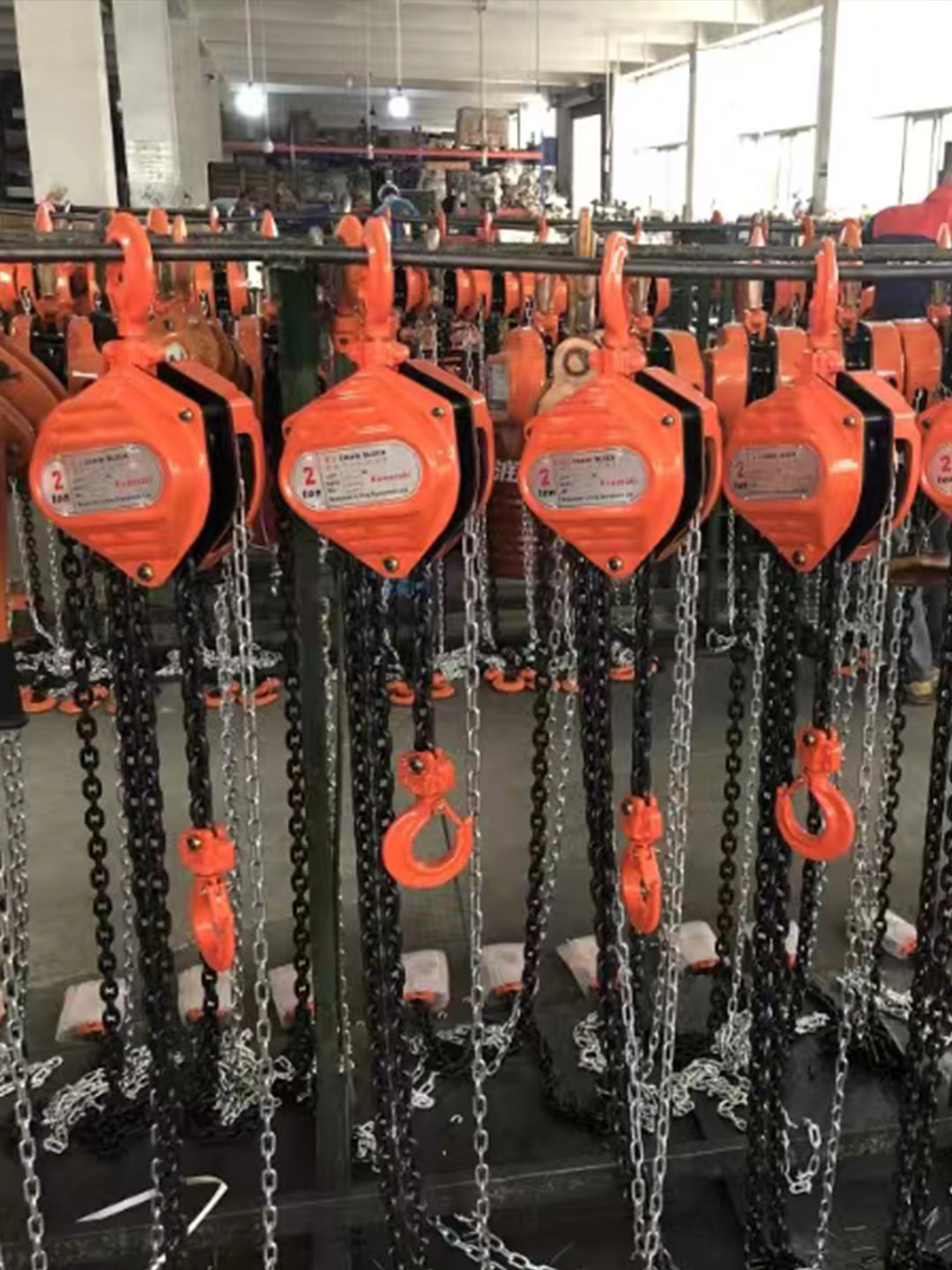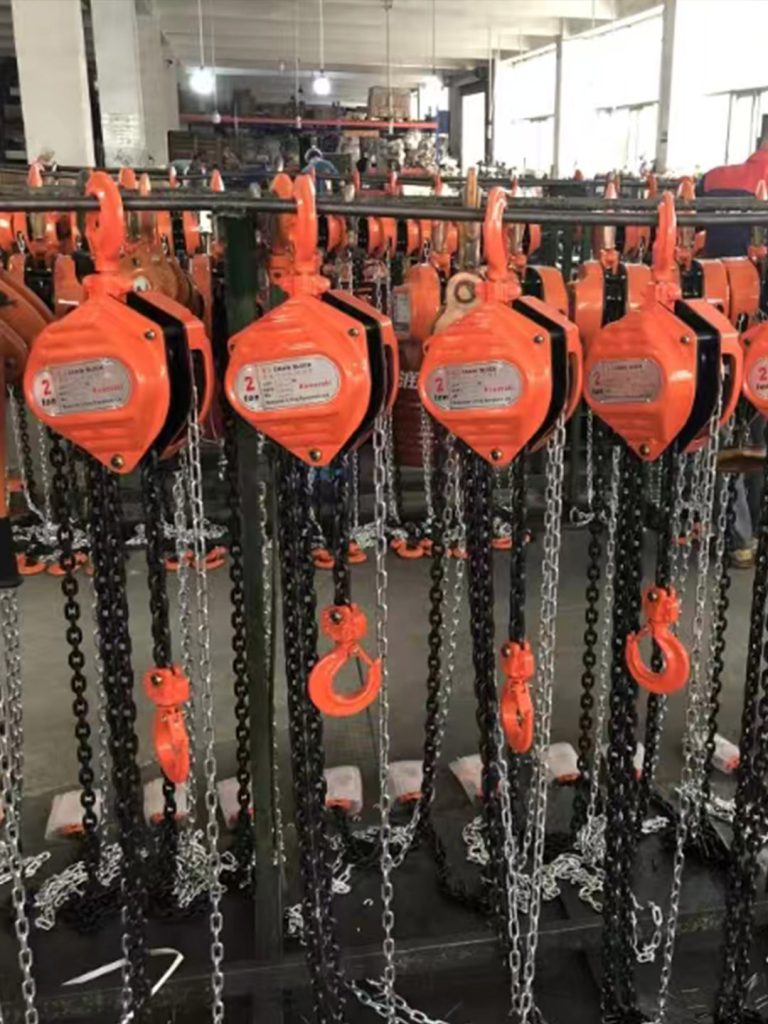Upgrading and optimizing a chain hoist is essential for improving its efficiency, safety, and lifespan in industrial and commercial applications. Chain hoists are crucial tools for lifting and moving heavy loads in various settings, including warehouses, construction sites, and manufacturing facilities. This document outlines key strategies and considerations for upgrading and optimizing chain hoists, focusing on their design, operation, and maintenance.
Understanding Chain Hoists
Chain hoists operate using a chain, sprocket, and gear mechanism to lift and lower heavy loads. They are available in manual, electric, and pneumatic configurations, each suited for specific applications. Manual chain hoists rely on human effort, while electric and pneumatic versions use powered mechanisms for greater efficiency and capacity.
Before delving into optimization strategies, it is essential to assess the specific requirements of the application, such as load capacity, lifting height, duty cycle, and environmental conditions. A thorough understanding of these factors will guide the upgrading process effectively.
Key Areas for Upgrading and Optimization
1. Capacity Enhancement
One of the primary reasons for upgrading a chain hoist is to increase its load capacity. Consider the following approaches:
- Upgraded Chains and Hooks: Replace existing chains and hooks with higher-grade materials to handle increased loads. Ensure the new components meet industry standards such as ASME or ISO.
- Reinforced Gears and Bearings: Upgrade the gears and bearings to handle greater torque and reduce wear over time. High-quality alloys and precision engineering can significantly enhance performance.
- Motor Replacement (for Powered Hoists): In electric or pneumatic hoists, upgrading to a higher-capacity motor can improve lifting capabilities. Ensure that the motor’s specifications align with the overall system.
2. Improving Speed and Efficiency
Faster and more efficient hoisting operations can boost productivity. Consider these optimization techniques:
- Variable Speed Controls: For electric hoists, installing a variable frequency drive (VFD) allows operators to adjust lifting speeds based on load and operational requirements. This enhances precision and reduces strain on the system.
- High-Efficiency Motors: Replace older motors with energy-efficient models that deliver higher performance with lower power consumption.
- Streamlined Gear Mechanisms: Optimize the gear ratio to achieve the desired balance between speed and power. Advanced gear designs can minimize energy loss and improve responsiveness.
3. Enhanced Safety Features
Safety is a critical consideration when upgrading chain hoists. Modern safety features can prevent accidents and ensure compliance with regulations:
- Overload Protection Systems: Install sensors that detect and prevent lifting beyond the hoist’s rated capacity. This reduces the risk of structural damage and accidents.
- Emergency Stop Mechanisms: Integrate quick-response emergency stop systems to halt operations in case of hazards.
- Advanced Braking Systems: Upgrade to electromagnetic or regenerative braking systems for precise load control and enhanced safety.
- Load Monitoring: Add digital load monitoring systems that provide real-time feedback on load weight and distribution.
4. Ergonomic and Operational Upgrades
Improving the usability of a chain hoist can reduce operator fatigue and enhance overall efficiency:
- Remote Control Systems: Equip the hoist with wireless remote controls for easier operation, especially in hard-to-reach areas.
- Ergonomic Pull Chains: For manual hoists, use ergonomic pull chains that reduce the effort required for operation.
- Low-Noise Operation: Implement noise-reducing components such as vibration dampers and quieter gears to create a more comfortable working environment.
5. Environmental Adaptations
For hoists operating in harsh or specialized environments, consider the following adaptations:
- Corrosion-Resistant Materials: Use stainless steel or coated components to prevent rust and corrosion in humid or marine environments.
- Explosion-Proof Design: For hazardous areas, upgrade to explosion-proof motors and enclosures that comply with ATEX or similar standards.
- Temperature Adaptability: Install components that can withstand extreme temperatures, such as specialized lubricants and heat-resistant seals.
6. Integration with Modern Technology
Incorporating advanced technologies can transform traditional chain hoists into smart, connected devices:
- IoT Integration: Equip the hoist with sensors and connectivity modules to enable real-time monitoring and diagnostics. This allows for predictive maintenance and data-driven decision-making.
- Automation and Robotics: Integrate the hoist with automated systems or robotic arms for seamless operations in high-tech manufacturing settings.
- Smart Controls: Use programmable logic controllers (PLCs) to automate repetitive tasks and improve precision.
Maintenance and Inspection for Long-Term Optimization
Proper maintenance is crucial for ensuring the longevity and performance of an upgraded chain hoist. Implement a rigorous maintenance schedule that includes:
- Regular Inspections: Check for signs of wear, deformation, or corrosion on chains, hooks, and other components. Address issues promptly to prevent failures.
- Lubrication: Apply appropriate lubricants to gears, chains, and bearings to reduce friction and wear.
- Calibration and Testing: Periodically calibrate load sensors and test safety features to ensure accurate and reliable operation.
- Component Replacement: Replace worn or damaged components with original or high-quality aftermarket parts.
- Documentation: Maintain detailed records of maintenance activities, inspections, and upgrades to track the hoist’s performance over time.
Cost-Benefit Analysis
Before undertaking any upgrades, conduct a cost-benefit analysis to evaluate the feasibility and return on investment (ROI). Consider factors such as:
- Initial Upgrade Costs: Include the cost of new components, installation, and labor.
- Operational Savings: Factor in reduced energy consumption, lower maintenance expenses, and improved productivity.
- Enhanced Lifespan: Calculate the potential extension of the hoist’s lifespan due to upgrades.
- Compliance and Safety: Account for the value of meeting regulatory requirements and reducing liability risks.

Conclusion
Upgrading and optimizing a chain hoist involves a combination of technical enhancements, safety improvements, and maintenance strategies. By focusing on capacity, efficiency, safety, and technology integration, businesses can achieve significant improvements in performance and reliability. Regular maintenance and a strategic approach to upgrades will ensure that the chain hoist continues to meet operational demands while adhering to the highest safety standards. This proactive approach not only extends the equipment’s lifespan but also enhances productivity and reduces operational costs, making it a worthwhile investment for any organization.


